Apple’s iOS 26 plans, in brief
- The new iOS update is called iOS 26, not iOS 19
- Big redesign with Liquid Glass effect
- New Gaming app
- Phone app brings call handling and live translations
Apple revealed its plans for its next iOS update at the WWDC keynote on June 9, 2025. The company also showed off new features for the next iPadOS update, macOS Tahoe, watchOS and more at the event.
As per the rumors, the upcoming iOS will be known as iOS 26 rather than iOS 19, with Apple breaking with tradition and switching to a simpler naming convention that relates to the year rather than a sequential number. Apple is taking the opportunity to bring consistency to the way it names all the operating systems, a move we at Macworld are celebrating.
As expected, Apple has also given all its operating systems a major design overhaul, with iOS benefiting from a new design language that uses what Apple refers to as Liquid Glass because it gives everything a glossy fluidity. This design extends to the dock and widgets. Apple is also making the whole interface more intuitive, with changes designed to elevate the most popular features as well as help you find new ones.
The redesign isn’t the only change coming to iOS later in 2025. There are also changes coming to iPhone apps, including the Phone app itself, the Camera, FaceTime, Messages and a brand new Games app. You can find out more about these features below. We also share which iPhones are expected to be compatible with iOS 26, and which iPhones aren’t supported.
The full version of iOS 26 won’t launch until September – you can find out about the iOS 26 release date below. But you don’t have to wait until then: Apple runs a beta, so developers and those who want to sign up for the public beta can try the new features out. Read on for information about the beta program, including the expected release date for the Public Beta and any developments in the beta testing program
Stay tuned to this regularly updated superguide for everything you need to know about the upcoming iOS update, the latest version of the beta and all the new features that are coming.

Apple
iOS 26 Release date
- Date TBC: 15 September, 2025 predicted
iOS 26 isn’t out yet, at least not for the general public. It will likely be available to download in September. iPadOS, macOS Tahoe, watchOS and the other updates will probably be available to download at the same time. This will likely happen shortly after the September event and the launch of the iPhone 17 and new Apple Watches.
iOS 26 Beta release date: How to get iOS 26 early
- Developer beta: June 9, 2025, June 13 update.
- Public beta TBC: July 15, 2025 estimated
You won’t have to wait until the full release to try the new software out. Apple runs a developer beta and a public beta for those who want to try out the new features before they are released to the general public. Both betas are free, though the developer beta requires a free registration as a developer.
The first version of the iOS developer beta was released following the WWDC keynote, so developers could immediately begin testing it with their products. This beta is not stable and there have been reports of issues from those who installed it straight away. Apple updated the first developer beta a few days after the launch.
Apple will also release a public beta. This usually arrives in July, about a month after the first developer beta. In 2024 it arrived on July 15, so we anticipate a similar release in 2025.
Between WWDC and the official release in the fall, Apple will release a string of beta releases, typically eight or so in total. We have a separate article that details how to join Apple’s beta software program so you can test the new software as soon as the beta arrives.
Anyone using the beta is encouraged to file bug reports using the included Apple’s Feedback Assistant app so that the company can address them. If you want to learn more about the beta read: What’s in the latest iOS beta and how to get it. And make sure you read why we advise against installing the iOS beta.
iOS 26 supported devices: Which iPhones get iOS 26
- Free software update for iPhone 11 and later
- The iPhone XR, XS, and XS Max will miss out on iOS 26
The following iPhones will get iOS 26:
- iPhone 16e (2025)
- iPhone 16/16 Plus/16 Pro/16 Pro Max (2024)
- iPhone 15/15 Plus/15 Pro/15 Pro Max (2023)
- iPhone 14/14 Plus/14 Pro/14 Pro Max (2022)
- iPhone SE (3rd gen) (2022)
- iPhone 13/13 mini/13 Pro/13 Pro Max (2021)
- iPhone 12/12 mini/12 Pro/12 Pro Max (2020)
- iPhone SE (2nd gen) (2020)
- iPhone 11/11 Pro/11 Pro Max (2019)
When Apple updates the operating system for its devices it often means that certain models are not compatible with the update. The iPhone XR, XS, and XS Max, which were supported by iOS 18 and launched in 2018, will miss out on iOS 26.
This doesn’t mean that those 2018 iPhones are unsupported by Apple. Apple will continue to issue security-related software updates to iOS 18 for a few more years. Read about how long iPhones are supported to find out which iPhones are no longer supported with security updates.
Nor does this mean that all the supported iPhones get all the new features. As was the case in 2024, only certain iPhones can support Apple Intelligence powered features. That’s the iPhone 15 Pro and Pro Max and the whole of the iPhone 16 range. This means that if your phone isn’t one of those mentioned you miss out on features such as the Visual Intelligence and Genmoji updates, as well as the Phone app ability to manage your unwanted calls.
Find out how the new iOS compares with the current version in our comparison of iOS 26 vs iOS 18: What’s different, what’s new, and should you update?
iOS 26 design: Liquid Glass and other design changes
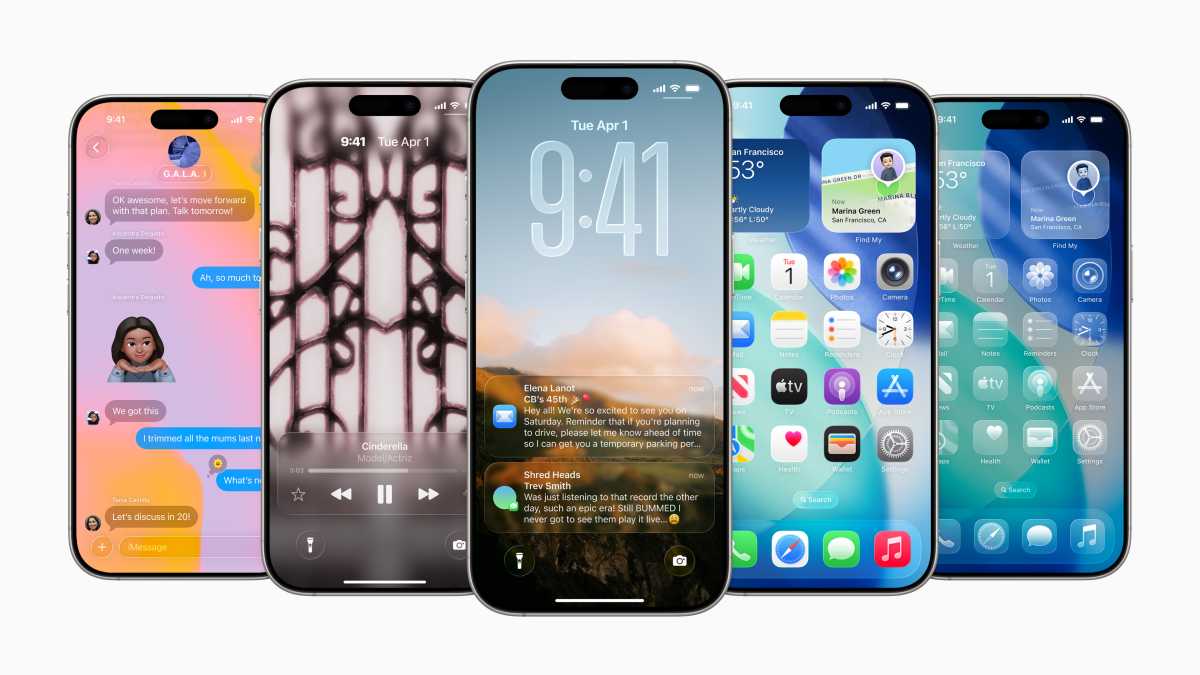
Apple
During the WWDC keynote Apple previewed the new iPhone features coming later in 2025. The biggest change is a visual one: a bold new redesign called Liquid Glass.
This represents the biggest change to iOS since iOS 7 was introduced in 2013. Back then Apple dropped the skeuomorphic design in favor of flat symbolic icons. This time the interface will be more curved with lots of translucent elements.
There are also changes coming that will simplify app interfaces and make the content more visible.
What is Liquid Glass?
The changes coming in iOS 26 were rumoured to be “Slicker and more modern” with Apple said to be adopting elements from visionOS. The new design lives up to those expectations. It is based on a graphical user interface that Apple is calling Liquid Glass, which creates a translucent effect that mimics the qualities of glass.
Apple says that it will feel more like interacting with the physical world, with elements being be more curved and less flat and dynamically reacting to your touch.
Apple says the changes blur the lines between hardware and software. In fact, according to Mark Gurman of Bloomberg, Apple is designing a 20th anniversary iPhone with curved glass on all sides that will be the ideal showcase for Liquid Glass.
This new Liquid Glass design extends to all of Apple’s products and to all of Apple’s apps. You’ll see the effect on the Dock, widgets and icons. Panes, windows, buttons and menus will be presented as translucent layers with specular highlights.
The Liquid Glass elements will change color to reflect the content beneath as you scroll and it will be possible to see blurred and refracted elements of the background through the top layer. This last point has lead to some concern about clarity, with the visible backgrounds affecting readability of text, for example.
Interface changes

Apple
Apple is designing the interface to give a clearer view of what is below the tools and menu bars. Menus will shrink as you scroll to reveal the content below. Apple is also removing some of the clutter from menus to simplify things and emphasise the more frequently used options. For example, rather than occupying a rectangular bar at the bottom of the screen, groups of controls will appear on floating elements that pop out additional controls, change as you move between views, and are tucked away when you scroll.
These changes to the menus are designed to make it easier to access the features you use most often, and discover others. Apple is trying to make iOS and its apps more intuitive.
A good example of how these design changes will be applied is the Lock Screen, which will be more adaptive. The image you choose as your wallpaper will be scaled to fit the height and width of the Lock Screen and positioned to fill the available space around elements like the time. Additionally, the wallpaper image will slide up as notifications come in.
We’ll discuss the changes coming to individual apps below, but essentially Apple is making it easier to find the tools you usually use, without the clutter of all the other features you don’t need.
iOS 26 and Apple Intelligence
Apple has been having trouble with some of it’s AI efforts, especially the Siri features that were touted at WWDC 2024. Apple had promised that iOS 18.4 would bring a major update to Siri, where it would be better at natural conversations with the user, using personal context, awareness of what is on screen, and the ability to perform in-app actions.
Apple has confirmed that these Siri-related features have been pushed back until 2026, which means they should come as an update to iOS 26, perhaps in March, but we could be waiting even longer.
Apple still had a number of impressive Apple Intelligence powered features to show off at WWDC though. In fact, some of the new features coming to Spotlight on the Mac look like some of the features promised for Siri.
Some of these new Apple Intelligence features will make a big impact in apps, especially the Phone app, which we will discuss below. Another beneficiary of Apple Intelligence is Visual Intelligence, which was introduced in iOS 18 and gains a very useful ability in iOS 26.
Visual Intelligence in iOS 26

Visual Intelligence in iOS 26.
IDG
In iOS 18 you can use Visual Intelligence by holding up the iPhone to view something you were curious about, triggering Visual Intelligence (via the Camera Control button if you have one, or via the Control Centre if not) and viewing information about what you were pointing the camera at. It could identify a building, or offer to add the date from a poster to your calendar, for example. That’s all very well when you are out and about, but what about when you are just browsing the web and want to know where something someone is wearing is from or where a video is being filmed?
In iOS 26 it will be possible take a screenshot and look up information about that image and products in it using Visual Intelligence. You can also ask ChatGPT for information about the screenshot.
Genmoji and Image Playground in iOS 26
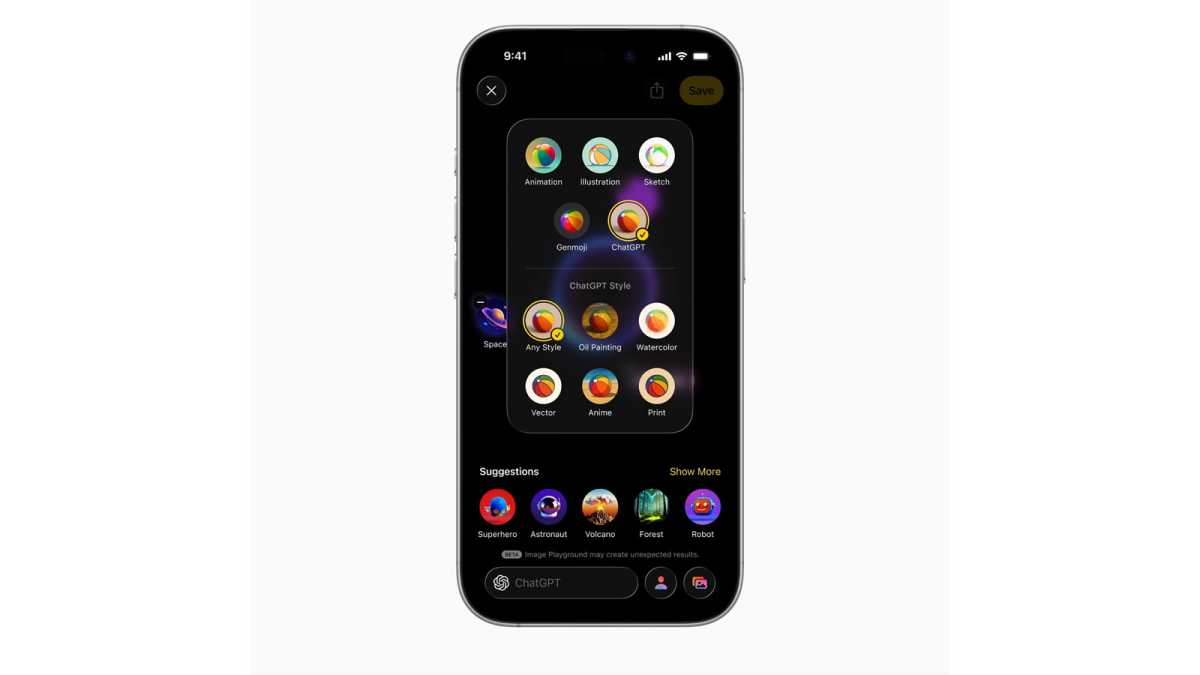
Apple
Also benefitting from Apple Intelligence is Genmoji, another feature that arrived with iOS 18. Genmoji lets you create custom emoji using AI. To create a Genmoji you type a description in the Describe an Emoji field and tap on Create New Emoji. You can use photos of people you know as a basis and refine the emoji until it represents what you are looking for. The emoji will then be available in your emoji keyboard to use.
In iOS 26 the Genmoji interface is getting a redesign. Users will be able to mix two emoji together, or alter an existing emoji to create something new, or even combine an emoji and a Sticker (which can be created from a photo). Users will be able to further customise emoji inside Image Playground, changing expressions.
Image Playground, which is Apple’s app for making AI-generated images, arrived in iOS 18 and is getting an update in iOS 26. In iOS 26 it will be possible to use ChatGTP styles, such as an oil painting as well as those provided by Apple to create images in Image Playground.
iOS 26 new apps and updated apps
- New Phone app functions
- Translation
- Camera app overhaul
With each iteration of iOS the set of apps Apple provides grows and evolves, and many of the changes coming to the apps on the iPhone are shared by those same apps on Apple’s other devices. iOS 26 is no different.
This time some of the upcoming changes are going to be quite transformative to how you use the phone – and by which we mean the telephone aspect to the iPhone.
Phone app
The phone app might not be the one we use the most, but as Apple says, it is fundamental to the iPhone. With iOS 26 the phone app is getting a big update that essentially turns it into a PA.
Apple is tapping into Apple Intelligence to bring new Voice Mail summaries to surface the most important information, but even more exciting, it is aiming to eliminate unwanted calls with a new Call Screening option that can answer the call in the background, ask the caller to explain their reason for calling, and then provide a text summary of those details to you before you decide whether or not to take the call. Of course this may make it harder to ignore calls from people you ought to actually speak to, but it will be a good way to siphon off spam and hoax calls from unknown numbers.
That’s not all. Another new feature is Hold Assist, which will automatically detect hold music and mute the call until it is connected to an agent. As a result you can get things done without having to keep your phone speaker playing irritating hold music until someone answers. When an agent becomes free they will be informed that you are there and your phone will ring alerting you to the connection and you can take the call. It’s going to be like having your own receptionist.
Another change in the Phone app should make it impossible to accidentally tap on contact in the Recents list and call them. Currently, if you tap on a name in your Recents list it will automatically call that person. A new setting will allow you to turn off “Tap Recents to Call”.
Live Translations
Also coming to the Phone app, but also present as a features in Messages and FaceTime, is Live Translations, which will help you communicate with someone who speaks another language.
With this feature you will be able to have a conversation with some who speaks a different language to you. If you are familiar with the Hitchhiker’s Guide to the Galaxy this is almost at the level of having a Bable Fish.
If you are speaking to some via the phone app the iPhone will translate what it being said, with a spoken voice translating what has been said into your language. The recipient will also hear translations in their own language. Apparently they don’t need to have an iPhone. The main restriction right now is that Live Translation for Phone is available only for one-on-one calls in English, French, German, Portuguese, and Spanish.
As we said above, it’s not only the Phone app that will get the Live Translation features. FaceTime and Messages will as well. And Translation is also finding its way into the Music app.
FaceTime
When speaking to someone via FaceTime you will see real-time captions in your own language. Live Captions aren’t entirely new to FaceTime, you can already turn on that functionality in Accessibility > Live Captions – although this only works if your language is set to English U.S.
As well as the new Live Translation feature, FaceTime also gets changes to the interface designed to surface the controls you need while keeping the caller visible. For example, controls float to the bottom right and recede when you don’t need them.
The FaceTime call list also gets a new look, with video messages autoplaying as you scroll.
Messages
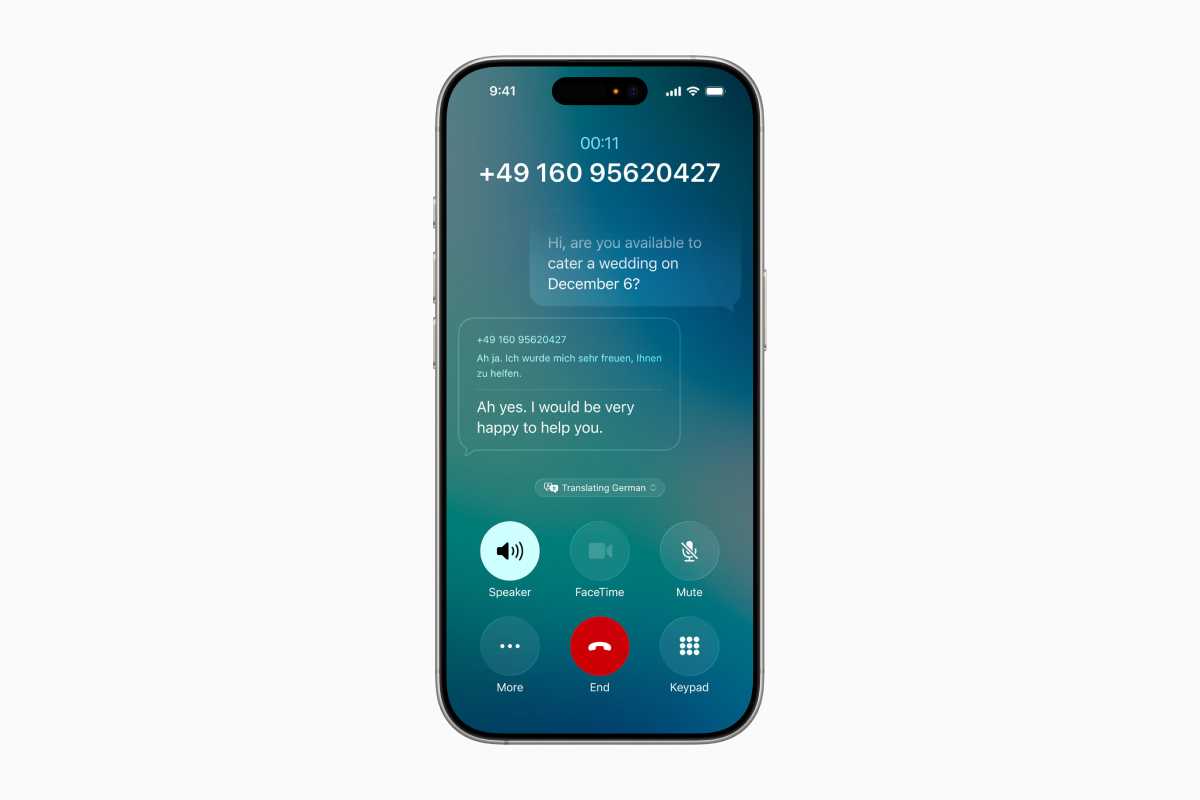
Apple
If you are using Messages to communicate with someone who speaks a different language what you type is translated into their language and vice versa.
As with the phone, Messages is getting a screening tool to combat spam. On-device spam detection will give you “total control over who appears in your conversation list,” according to Apple.
It is already possible to filter out spam by using the Unknown Senders list in Messages, but in iOS 26 Messages will have a greater ability to screen for spam, and it will make sure you still receive verification codes and other critical or time sensitive messages.
Also in Messages you will be able to add a background image to Group Chats and a new option to create a poll will be available. Messages will even suggest a poll if a situation calls for one. Anyone can add options to the poll, as well.
Those who have access to Apple Cash (still U.S. only) can also access this from group chats.
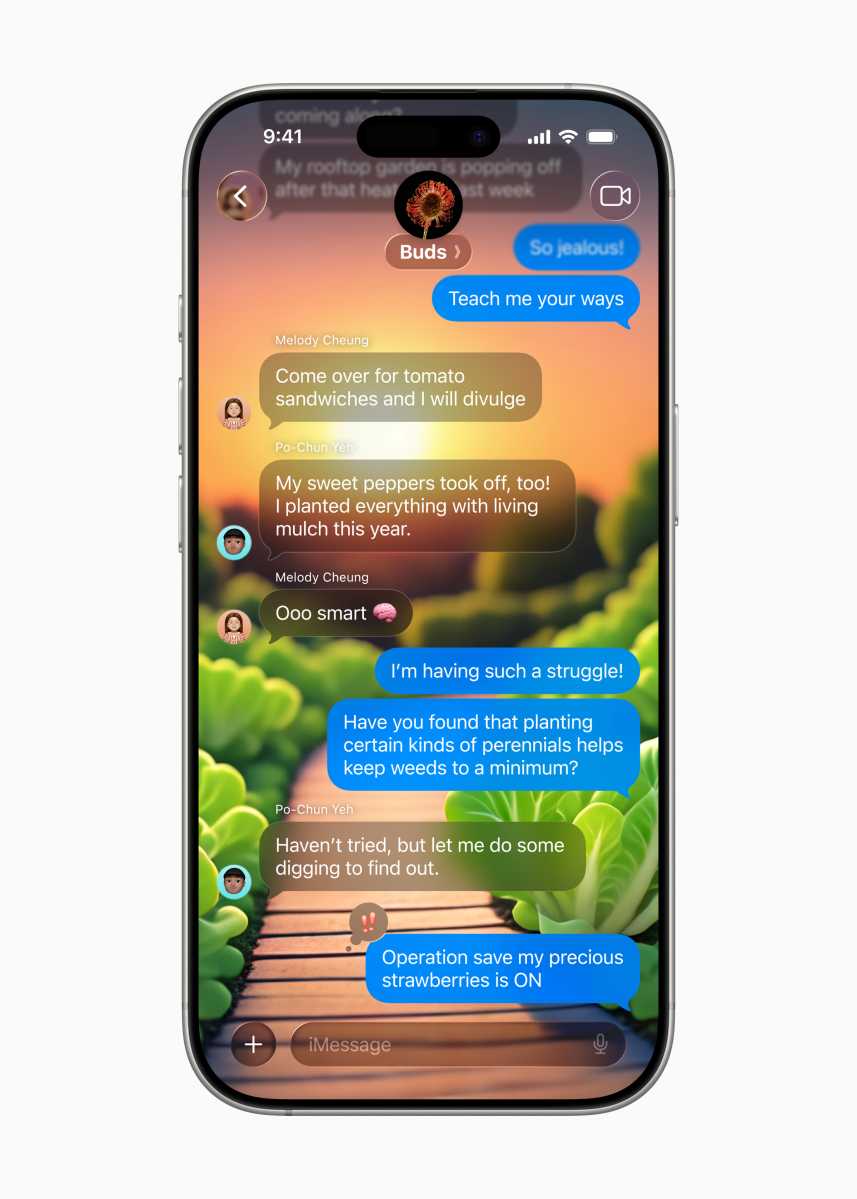
Apple
Music
In Apple Music you will be able to follow the lyrics alongside the translation into your own language. For some languages you will even see a pronunciation guide.
Also coming to the Music app is a new auto-mix option that uses AI to fade between songs and match beats like a DJ would.
There is also a new animated Apple Music artwork option for the Lock Screen.
Interface changes should also mean it is faster and easier to get to the music you are in to. For example, you can pin your favourite album or playlist to the top of your library.
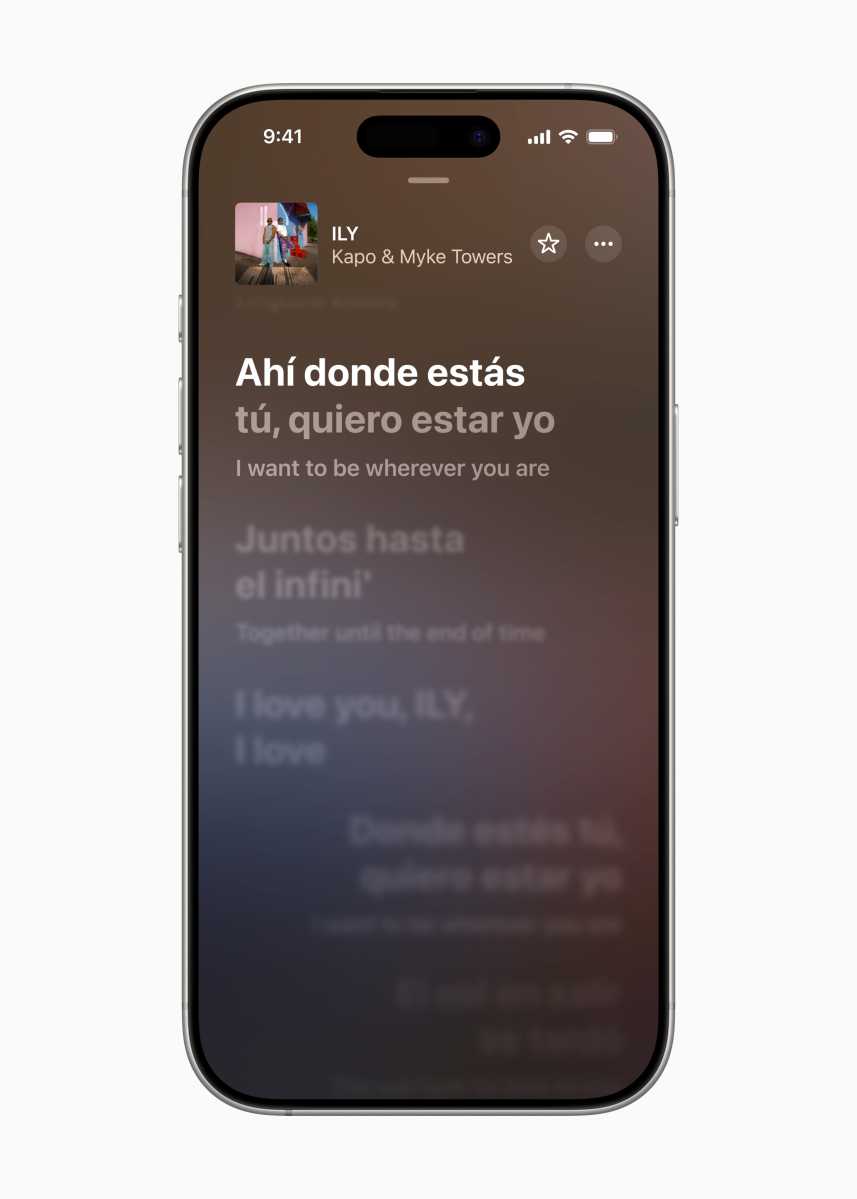
Apple
Games
Apple is finally tidying up the gaming experience on the iPhone with a brand new Games app. With half a billion people playing games on iPad, according to Apple, it’s about time.
Apple says it is creating a new destination to help its gamers get more out of their games. The Games app will offer various tabs to make finding the games you are playing or have played easier. The Home tab reveals what’s most relevant to you. The Library tab shows all the games you have ever downloaded.
There is also a Play Together tab where you can see what your friends are playing, play games with them, compare scores, and invite them to play games. You can also challenge them to beat your highest score in single player games. Turning single player games into fun competitions with friends, with scores in real time.

Apple
Another change coming to gaming on iPhone (and iPad) is a new consistency to hoe touch controls are applied in games. Developers working on an iPhone or iPad game that requires more advanced controls have always had to design their own touch controls, and this can be inconsistent. In iOS 26, Apple will provides its own touch controls for buttons, thumbsticks, dpads, throttles, and touchpads.
Apple Wallet
Like Apple Cash many of the new Apple Wallet features are U.S. only, such as the ability to add Drivers Licenses to Apple Wallet.
Apple says there will be more ways to pay with Apple Pay in iOS 26, for example you can redeem points or choose to pay in instalments. That feature is currently available in nine states. From the fall Apple says it will be possible to add a U.S. passport, but only for use for flights inside the U.S.
There will be a new API for developers to take advantage of, enabling them to provide customers with more information within the Wallet app, such as details of the services included with the fare and upgrade options that can be accessed from within the Wallet app.
You can also track Apple Pay orders, with Apple Intelligence finding the order details and tracking information and keeping them together for you.
Passwords & Autofill
The Passwords app, introduced in iOS 18, is also getting an update. You can check changes that you’ve made to accounts logged in the Passwords app, view previous passwords that were used for these accounts and see when they were altered.
In addition, iOS 26, Apple is introducing improvements that will make using passkeys easier. Passkeys is an authentication method that replaces traditional passwords with security keys and biometrics. Many apps and websites already provide support for passkeys, and with the iOS 26 update, it will be possible for iPhone and iPad apps to enable users to create a passkey with just a tap. Passkeys can be authenticated with Face ID or Touch ID, and credentials will be synchronized between your Apple devices via iCloud.
It will also be possible to pre-fill personal data, such as name and email, so you no longer have to waste time filling in long sign-up forms. Even better, iOS 26 will be able to autofill verification codes from Gmail and WhatsApp. Verification code autofill may also work in Google Chrome, currently verification codes only work with Apple’s Safari browser.
Maps
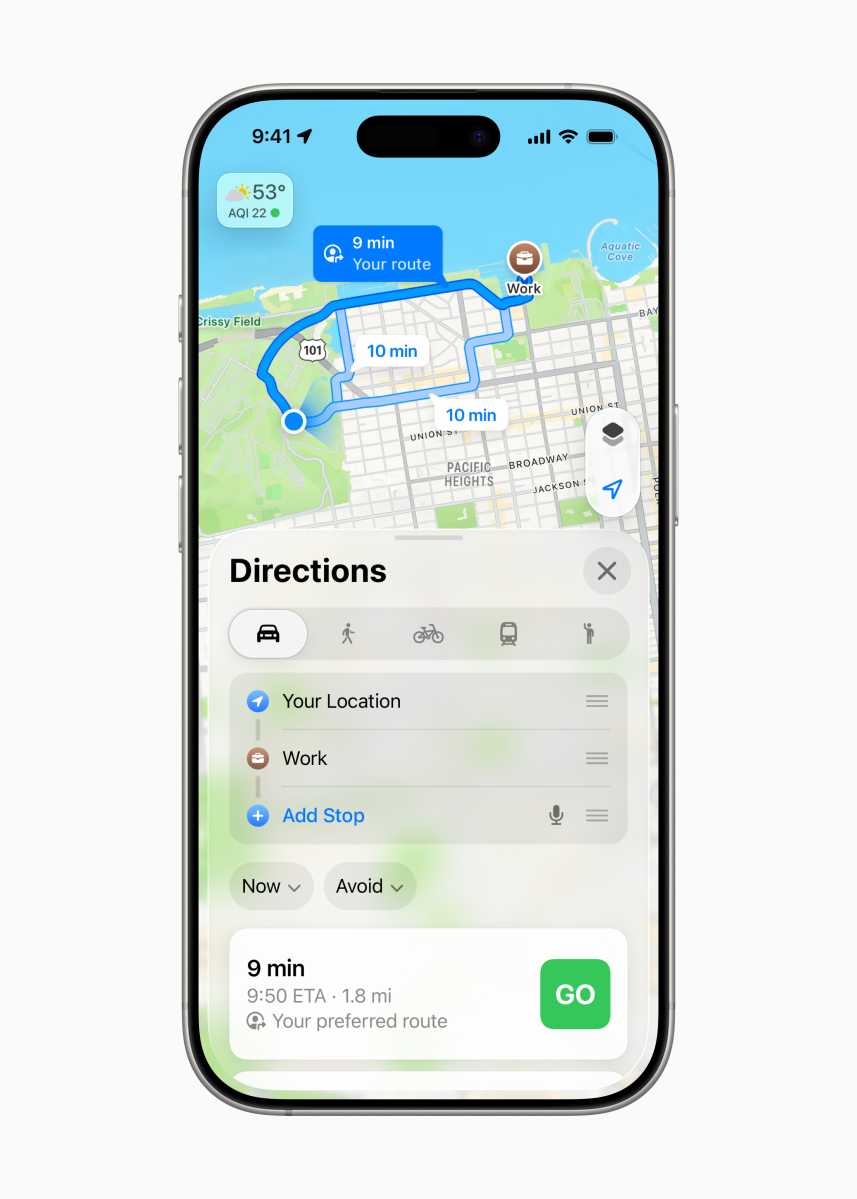
Apple
The Maps app also gets an update, using Apple Intelligence to understand your regular commutes and learn your favourites. With this information it will be able to warn you if you should take a different route due to traffic.
Another change to Maps is that if you want it to it can log Visited Places, which will make it easier to find and recall places you have been to in the past. It’s easy to delete this history too.
Reminders
In iOS 26, Reminders will suggest things such as tasks and grocery items, plus follow-ups based on your emails or other text on your iPhone, Mac, and more.
Clock
You will finally be able to set a snooze duration of between one and 15 minutes, rather than being stuck with set eight minute snoozes!
You will also gain the ability to set alarms from inside other apps. For example, you could set an alarm from within a recipe app without you needing to open the Clock.
Other new features in iOS 26
There are lots of other changes coming to iOS itself, many of which will improve the overall experience.
Running tasks in the background
iOS 26 will have a new API for running tasks in the background. So you won’t have to keep an app open when they’re doing something important, such as uploading files or exporting a video. Users can switch to other apps without interrupting the previous task.
AI-powered battery management
A new adaptive low power mode has been spotted in the iOS 26 developer beta. This doesn’t replace the regular low power mode (that’s still around) but instead uses machine learning to make adjustments that could help eke out a little more juice from your battery.
In addition, the Lock Screen will now display estimated charging times to hit 80 percent and 100 percent battery power.
